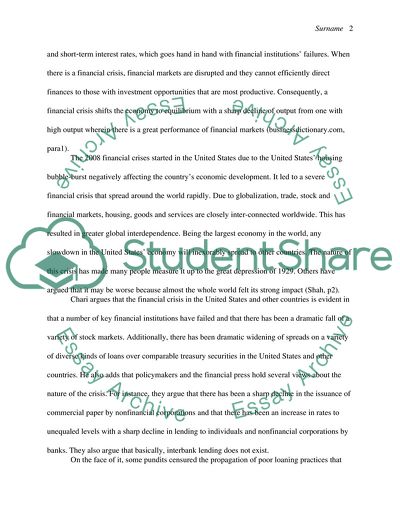Cite this document
(The Financial Crisis in 2008 Research Paper Example | Topics and Well Written Essays - 1500 words, n.d.)
The Financial Crisis in 2008 Research Paper Example | Topics and Well Written Essays - 1500 words. Retrieved from https://studentshare.org/macro-microeconomics/1729631-2008-financial-crisis
The Financial Crisis in 2008 Research Paper Example | Topics and Well Written Essays - 1500 words. Retrieved from https://studentshare.org/macro-microeconomics/1729631-2008-financial-crisis
(The Financial Crisis in 2008 Research Paper Example | Topics and Well Written Essays - 1500 Words)
The Financial Crisis in 2008 Research Paper Example | Topics and Well Written Essays - 1500 Words. https://studentshare.org/macro-microeconomics/1729631-2008-financial-crisis.
The Financial Crisis in 2008 Research Paper Example | Topics and Well Written Essays - 1500 Words. https://studentshare.org/macro-microeconomics/1729631-2008-financial-crisis.
“The Financial Crisis in 2008 Research Paper Example | Topics and Well Written Essays - 1500 Words”, n.d. https://studentshare.org/macro-microeconomics/1729631-2008-financial-crisis.


